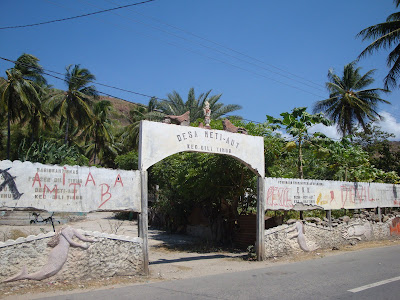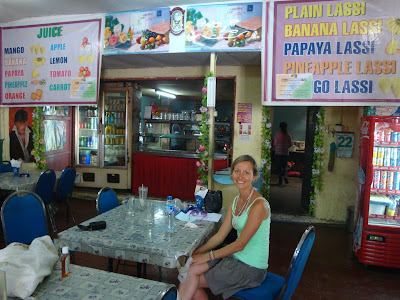Felicidade Borges is one of Tuba Rai Metin's clients. She owns a vegetable shop in Dili.
Dili, Timor-Leste: 18 June 2010
Helping women from poor households to establish small businesses is the daily work of the Timorese microfinance institution Tuba Rai Metin (TRM). Their belief is that the prosperity of Timor-Leste has to be built upon the prosperity of the most important structure in society, the family unit.
The organization has expanded and seen a steady rise in the number of clients over the last few years. TRM now has offices in 6 districts. They employ 54 people and have over 3,000 credit clients (100% of which are women). TRM’s client base has grown by more than 25% in the last 6 months.
TRM’s Chief Executive, Angelo Soares, attributes much of this progress to the support they have received from the Inclusive Finance for the Under-Served Economy (INFUSE) programme. INFUSE is jointly implemented by the United Nations Capital Development Fund (UNCDF) and the United Nations Development Programme (UNDP), with support and funding from the Ministry of Economy and Development and the Australian Agency for International Development (AusAID).
The INFUSE programme strives towards building an inclusive financial sector with the overall goal of increasing sustainable access to a range of financial services for the poor and low income population in Timor-Leste; such as savings, loans, money transfer services, and insurance.
“The financial sector in Timor-Leste is developing and the microfinance industry has progressed beyond the start-up phase. However, the outreach of financial services providers remains limited and at this stage a sector-wide approach to develop a thriving and robust financial sector, that includes everyone, is required”, says Marcella Willis from the INFUSE project.
In 2008 INFUSE began supporting Tuba Rai Metin. In collaboration with another UNCDF Programme, MicroLead, INFUSE brought the leading Indian microfinance institution, BASIX, to Timor-Leste to provide technical assistance to TRM.
BASIX has over 1.5 million customers in India. It provides financial, agricultural and business development help to poor households.
“The partnership with BASIX has been very beneficial to us”, says Angelo Soares from TRM. “With their expertise we have made important administrative changes and our business has grown”.
Subhash Jindal is the BASIX representative who has been posted to Timor-Leste for 4 years to work alongside TRM.
“When I arrived I found the quality of the TRM team was good, but they were struggling. It was a case of them surviving but stagnating”.
Mr Jindal goes on to say: “We knew that we could help TRM, by providing the technical assistance that they were missing and helping them to implement changes”.
Leading financial service providers, like BASIX, from developing countries are showing an increasing interest in expanding their operations regionally and globally. The MicroLead Fund, managed by UNCDF, gives loans and grants to such providers so that they can replicate their success in other countries, or assist national providers, like Tuba Rai Metin, to do the same.
The relationship between TRM and BASIX is a good example of South-South cooperation; where developing countries work together to tackle problems, share information and offer support.
Felicidade Borges, from Dili, is one of TRM’s clients. During the crisis in 2006 her vegetable shop was destroyed. Recently TRM gave her a US$50 loan to set up a new shop. She now makes a profit of $27 a week and repays just $3.50 per week on her loan. She also deposits $1 a week into a savings account with TRM.
“The support of TRM gave me a second chance and in the future I hope to take out another loan in order to expand my business”, she says.
Following the 2006 crisis in Timor-Leste, 4 microfinance institutions were wiped out. Even now TRM is one of only three such organizations in the country. But the success of TRM over the last few years means the future looks bright. The beneficiaries of their success are the female clients, their families and Timor-Leste as a whole.
Source: UNDP 2010 (http://www.tl.undp.org/undp/Helping%20people%20help%20themselves%20%E2%80%93%20Microfinance%20in%20action%20in%20Timor-Leste.html)































































